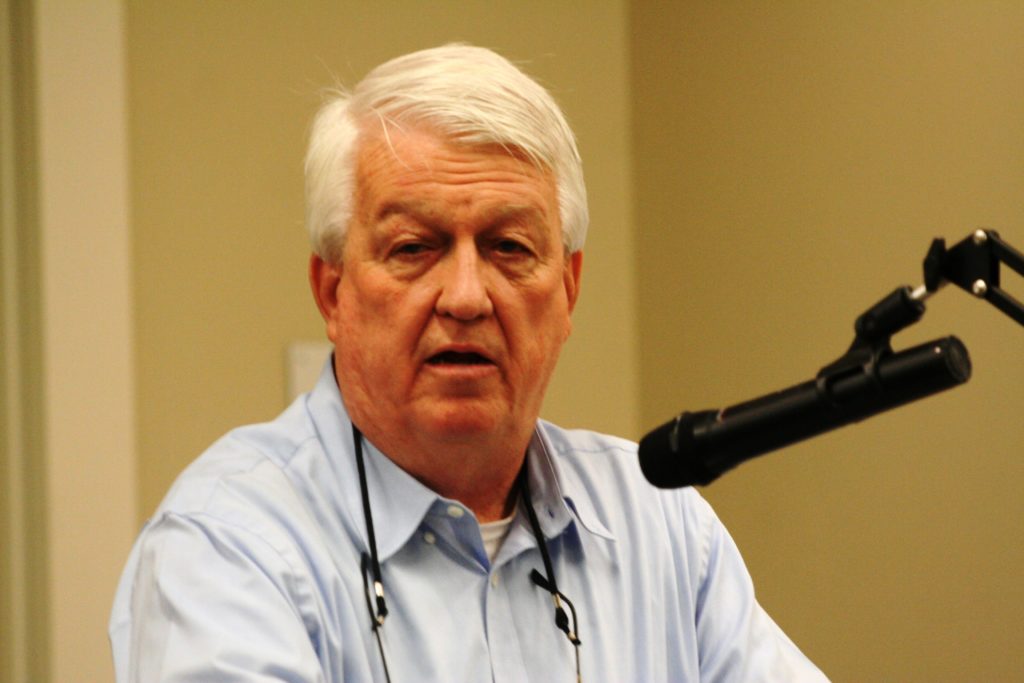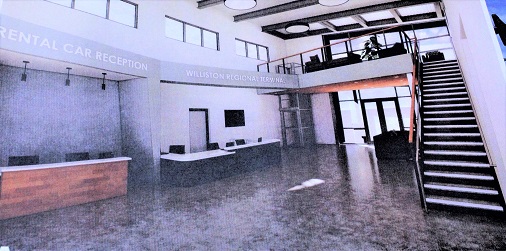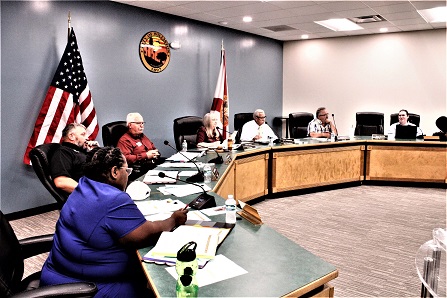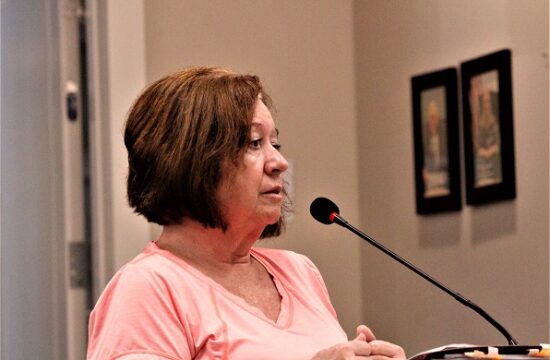This drawing of Laurel Point is an artist’s rendering of what the pocket neighborhood will look like.
By Terry Witt -Spotlight Senior Reporter
A planned Williston pocket neighborhood offering smaller homes at lower prices won preliminary approval Tuesday night from the Williston City Council.
Laurel Point Planned Development would wrap around the back and one side of the Winn Dixie Shopping Center and would give homeowners walking or driving access to nearby stores, a medical center and a bank.
The council voted 5-0 to give developers Ken Boyer and Dr. Wade Bullock preliminary approval of a change in land use and zoning from straight commercial to mixed use.
The 8.81 acre development, known as a pocket neighborhood, would have an estimated 47 homes ranging from one to three bedroom models. The development will come back for final council approval in two weeks.
Laurel Point will have one private driveway and no other streets.
The Laurel Point developers constructed Camellia Plantation. Camellia Plantation has larger lots and more expensive homes than its future next door neighbor Laurel Point.
“What is so neat about this project; it has the ability to combine the residential, the Winn Dixie, the medical and banking all in a short distance,” said Johnny Sims representing the developers. “You normally don’t find all these things in a smaller city. This is just a unique location with a unique flavor that would serve the needs of the city and provide an opportunity to live in, work in Williston.”
Questions were raised about the development.
Chris Ozbun, a homeowner in Camellia Plantation asked whether the homes could be rented and what control the developers or future homeowners association would have over rentals.
Ozbun was concerned with protecting Camellia Plantation residents and their home property values given the fact that the lower priced homes in Laurel Point could potentially invite someone to buy multiple homes for rentals.
“Are we going to address rental situations? My concern is we have these smaller places; would people buy them and turn them into rentals?” he said.
Boyer said they hadn’t given it any thought to this point.
“We have not thought about that; that’s a good question to bring up. We haven’t discussed that as developers. There is a need for rentals in our community and I will say this, the community is going to be very nice, just like Camellia Plantation is very nice. If you have a rental in there, it will have to be maintained. I’m not saying we are, we just haven’t crossed that bridge.”
Boyer said an attorney for the development company is carefully crafting a homeowners’ association agreement that would give homeowners control over their community. The attorney is reviewing the rules and regulations of a variety of homeowner associations to determine what will work best in Laurel Point.
“We are the developers of Camellia Plantation. A lot of our friends, including my son live in Camellia Plantation. It’s important for us that it be maintained,” Boyer said.
Councilman Charles Goodman said he has been associated with many homeowner associations and he said HOAs can fade away and become dysfunctional after a period of years if not registered properly with the state. He said the two groups of potential home buyers Laurel Point is being built to attract, young working people and senior citizens won’t want to be bothered by running a homeowners association.
“Is there any plan in place to ensure the homeowners association continues after the development is over?” Goodman said.
Sims said homeowners associations are often associated with condominiums or apartments, and sometimes subdivisions. He said Laurel Point will consist of homeowners who have an incentive to maintain and keep their properties looking good to retain the home’s value.

Councilman Justin Head said one of Laurel Point’s entrances and exit points for the development would be U.S. 41. He was concerned about whether the entrance to the subdivision would be in conflict with U.S. 41 traffic.
Sims said the driveway entrance of the subdivision must be approved by the Florida Department of Transportation. The developers must prove to DOT that the U.S. 41 entrance and exit on U.S. 41 is safe and functional. He said the driveway plan will come back to council members for review.
Head was also concerned about a Laurel Point drainage retention area being close to Camellia Plantation. Sims said the Southwest Florida Water Management District will oversee the engineering of the stormwater drainage to ensure no additional water enters the area than was there before. City Planner Jackie Gorman said the city’s Land Development Code prohibits one development allowing water to invade neighboring properties. She said the city will review the Planned Development to ensure compliance with stormwater requirements.
Boyer said Camellia Plantation’s drainage, which was engineered by his group, has worked well through heavy storms and big rain events over the years. He said Camellia Plantation and Laurel Point will have the same clay base. He said experience has shown the land percolates well.
Boyer and Bullock have a year to fully develop a master plan for the site, which will come back to the council for approval. The detailed master plan must address all the issues associated with the development.
—————
City of Williston Regular Meeting January 8, 2020; Posted January 9, 2020













